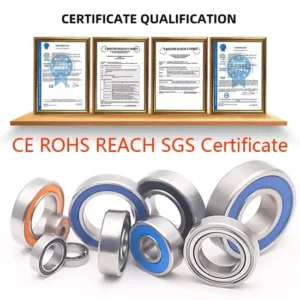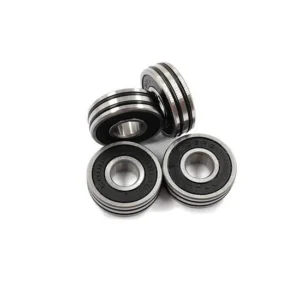This article provides a comprehensive guide to ball bearing specifications, focusing on detailed information essential for precision engineering needs. It covers various aspects such as product parameters, application scenarios, case studies, and solutions. By understanding the specifications and applications of ball bearings, engineers and manufacturers can make informed decisions to optimize their precision engineering projects.
The Ultimate Guide to Ball Bearing Specifications offers a detailed overview of the key parameters that engineers should consider when selecting ball bearings for their precision engineering needs. These parameters include:
-
| Parameter | Description |
|---|---|
| Outer Diameter | Refers to the diameter of the outer ring of the ball bearing, which determines the size of the bearing and its compatibility with other components. |
| Inner Diameter | Indicates the diameter of the inner ring, which is the size of the shaft or hub that the bearing will fit onto. |
| Width | Represents the width of the ball bearing, which affects the bearing's load capacity and overall size. |
| Bore Type | Describes the shape of the bore, which can be cylindrical, tapered, or other specialized shapes to accommodate different shaft designs. |
Understanding these parameters is crucial for selecting the right ball bearing for a specific application, as they directly impact the bearing's performance and compatibility with other components.
Ball bearings are widely used in various precision engineering applications. The Ultimate Guide to Ball Bearing Specifications highlights some common scenarios where ball bearings are essential:
-
These applications require ball bearings with specific characteristics, such as high load capacity, low friction, and precise tolerances.
The Ultimate Guide to Ball Bearing Specifications provides real-world examples of how ball bearings are used in different industries. Here are a few case studies:
-
These case studies demonstrate the practical value of the Ultimate Guide to Ball Bearing Specifications in real-world applications.
The Ultimate Guide to Ball Bearing Specifications offers solutions to common challenges faced by engineers and manufacturers when selecting and using ball bearings. Some of these solutions include:
-
By following these solutions, engineers and manufacturers can ensure the optimal performance and reliability of their precision engineering projects.
The Ultimate Guide to Ball Bearing Specifications: Detailed Information for Precision Engineering Needs is an invaluable resource for engineers and manufacturers seeking to optimize their precision engineering projects. By understanding the product parameters, application scenarios, use cases, and solutions provided in the guide, they can make informed decisions and select the right ball bearings for their specific needs.
Keywords: ball bearing specifications, precision engineering, product parameters, application scenarios, use cases, solutions
For further information or to send an inquiry, please contact us at info@vivalr.com or call us at (86) 15866781826.

显示 1-4 个结果(共 11858 个结果)



